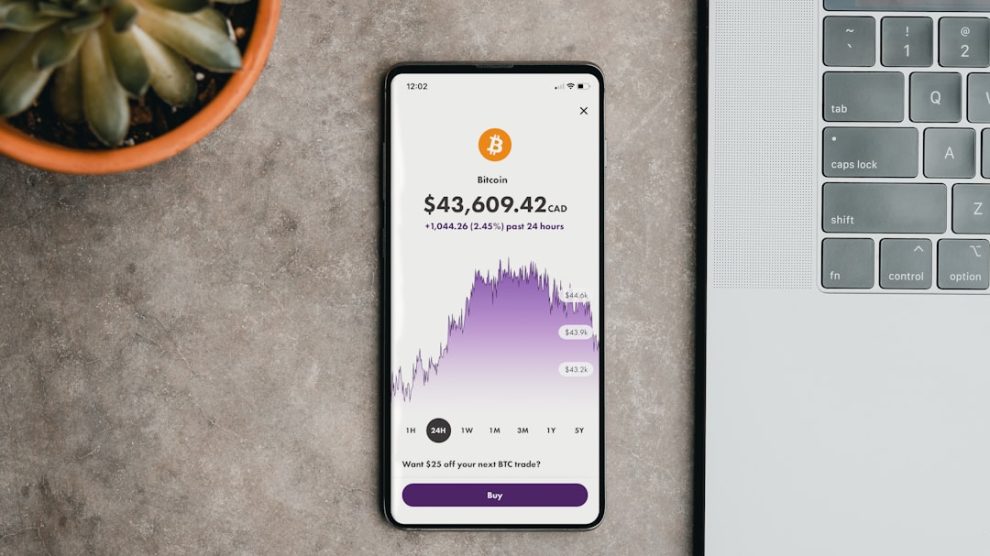Margin trading is a practice that allows investors to borrow money from a brokerage firm to invest in securities such as stocks, bonds, or commodities. This borrowed money is known as “margin,” and it acts as a loan that the investor must repay with interest. The concept of margin trading can be appealing to investors because it allows them to potentially increase their returns by leveraging their investments. However, it is important for investors to understand the risks involved before engaging in margin trading.
Understanding the risks and rewards of margin trading is crucial for any investor. While margin trading can potentially lead to higher returns, it also comes with significant risks. Investors who engage in margin trading must be prepared for the possibility of losing more money than they initially invested. It is important to have a thorough understanding of the market and the specific securities being traded before entering into margin trading. Additionally, investors must be able to handle the emotional and psychological stress that comes with the potential for significant losses.
Understanding Margin Trading: The Basics
Margin trading involves borrowing money from a brokerage firm to purchase securities. When an investor opens a margin account, they are required to deposit a certain amount of their own funds, known as the initial margin requirement. This initial margin requirement is typically a percentage of the total value of the securities being purchased. The brokerage firm then lends the investor the remaining funds needed to complete the purchase.
Once the investor has purchased the securities, they have a certain amount of time to repay the loan. This period is known as the maintenance period. During this time, the investor must maintain a minimum level of equity in their account, known as the maintenance margin requirement. If the value of the securities falls below this requirement, the investor may receive a margin call from their brokerage firm, requiring them to deposit additional funds or sell some of their securities to meet the requirement.
The Risks of Margin Trading: Potential Losses and Pitfalls
Margin trading carries significant risks that investors must be aware of. One of the main risks is the potential for losses. Because margin trading involves borrowing money to invest, investors can lose more money than they initially invested if the value of their securities decreases. This is known as leverage risk. If the market moves against the investor, they may be forced to sell their securities at a loss to repay the loan.
Another risk of margin trading is the possibility of receiving a margin call. A margin call occurs when the value of the securities in an investor’s account falls below the maintenance margin requirement. When this happens, the brokerage firm may require the investor to deposit additional funds or sell some of their securities to meet the requirement. If the investor is unable to meet the margin call, their brokerage firm may liquidate their securities to repay the loan.
There have been numerous examples of margin trading gone wrong, resulting in significant losses for investors. One notable example is the collapse of Long-Term Capital Management (LTCM) in 1998. LTCM was a hedge fund that engaged in highly leveraged trades using borrowed money. When the Russian government defaulted on its debt, it caused a global financial crisis that led to significant losses for LTCM. The fund eventually had to be bailed out by a consortium of banks to prevent a wider financial collapse.
The Rewards of Margin Trading: Potential Gains and Benefits
While margin trading comes with significant risks, it also offers the potential for higher returns. By leveraging their investments, investors can amplify their gains if the market moves in their favor. This can be particularly beneficial in a bull market, where stock prices are rising.
One of the main benefits of margin trading is the ability to leverage investments for higher returns. By borrowing money to invest, investors can increase their purchasing power and potentially earn higher profits. For example, if an investor has $10,000 and wants to invest in a stock that costs $100 per share, they can only purchase 100 shares. However, if they have a margin account and can borrow an additional $10,000, they can purchase 200 shares. If the stock price increases to $110 per share, the investor would make a profit of $2,000 instead of $1,000.
There have been numerous examples of successful margin trading strategies. One notable example is the story of George Soros and his bet against the British pound in 1992. Soros believed that the pound was overvalued and borrowed heavily to short-sell the currency. When the Bank of England was forced to devalue the pound, Soros made a profit of over $1 billion.
Money Management in Margin Trading: Strategies for Success
To be successful in margin trading, it is important to have a solid money management strategy. This involves setting clear goals and objectives, as well as implementing risk management techniques to protect against potential losses.
One important aspect of money management in margin trading is having a plan. This includes setting specific investment goals and objectives, as well as determining the amount of risk that you are willing to take. It is important to have a clear understanding of your financial situation and to set realistic expectations for your investments.
Setting stop-loss orders is another important strategy for managing risk in margin trading. A stop-loss order is an order placed with a broker to sell a security if it reaches a certain price. By setting a stop-loss order, investors can limit their potential losses if the market moves against them.
Diversifying investments is also crucial for successful money management in margin trading. By spreading investments across different securities and asset classes, investors can reduce their exposure to any single investment and minimize the impact of potential losses.
Financial Management in Margin Trading: Balancing Risk and Reward

Financial management plays a crucial role in margin trading, as it involves balancing the risks and rewards of investing on margin. This requires understanding your risk tolerance, calculating potential returns, and finding the right balance between risk and reward.
Understanding your risk tolerance is important in margin trading, as it determines how much risk you are willing to take on. Some investors are more risk-averse and prefer to invest in low-risk securities, while others are more comfortable taking on higher levels of risk in pursuit of higher returns. It is important to assess your own risk tolerance and invest accordingly.
Calculating potential returns is another important aspect of financial management in margin trading. By analyzing the potential returns of different investments, investors can make informed decisions about where to allocate their funds. This involves considering factors such as the expected return on investment, the level of risk involved, and the potential for losses.
Balancing risk and reward is crucial in margin trading. While leveraging investments can potentially lead to higher returns, it also increases the level of risk. It is important to find the right balance between risk and reward that aligns with your financial goals and risk tolerance.
The Importance of Finance Management in Margin Trading
Effective finance management is crucial for success in margin trading. This involves monitoring investments, keeping track of margin requirements, and staying informed about market conditions.
Monitoring investments is an important part of finance management in margin trading. By regularly reviewing the performance of your investments, you can identify any potential issues or opportunities for improvement. This includes monitoring the value of your securities, as well as any changes in market conditions that may impact your investments.
Keeping track of margin requirements is also crucial in margin trading. Margin requirements can change over time, so it is important to stay informed about any updates or changes that may affect your account. Failing to meet margin requirements can result in a margin call or forced liquidation of your securities.
Staying informed about market conditions is another important aspect of finance management in margin trading. By staying up to date with the latest news and trends in the market, you can make informed decisions about your investments. This includes monitoring economic indicators, company earnings reports, and any other factors that may impact the value of your securities.
Margin Trading vs. Traditional Investing: A Comparison
Margin trading and traditional investing are two different approaches to investing that come with their own pros and cons. Understanding the differences between these two approaches can help investors determine which one is right for them.
One of the main differences between margin trading and traditional investing is the use of leverage. Margin trading allows investors to borrow money to invest, which can potentially amplify their gains or losses. Traditional investing, on the other hand, does not involve borrowing money and relies solely on the investor’s own funds.
Another difference between margin trading and traditional investing is the level of risk involved. Margin trading carries a higher level of risk due to the potential for losses exceeding the initial investment. Traditional investing, while still subject to market fluctuations, does not carry the same level of risk as margin trading.
One advantage of margin trading is the potential for higher returns. By leveraging investments, investors can potentially earn higher profits if the market moves in their favor. Traditional investing, while generally more conservative, may not offer the same level of potential returns.
Margin Trading Regulations: What You Need to Know
Margin trading is subject to regulations that are designed to protect investors and maintain the stability of financial markets. It is important for investors to understand these regulations and ensure that they are compliant when engaging in margin trading.
Margin requirements are one of the main regulations that govern margin trading. These requirements specify the minimum amount of equity that an investor must maintain in their account when engaging in margin trading. Failure to meet these requirements can result in a margin call or forced liquidation of securities.
Margin restrictions are another important aspect of margin trading regulations. These restrictions may limit the types of securities that can be purchased on margin, as well as the amount of leverage that can be used. It is important to understand these restrictions and ensure that you are compliant when engaging in margin trading.
Staying compliant with margin trading regulations is crucial for protecting your investments and avoiding potential penalties or legal issues. It is important to familiarize yourself with the regulations that govern margin trading in your jurisdiction and ensure that you are following them at all times.
Is Margin Trading Right for You?
In conclusion, margin trading can be a potentially lucrative investment strategy, but it also comes with significant risks. It is important for investors to have a thorough understanding of the risks and rewards of margin trading before engaging in this practice. By understanding the basics of margin trading, managing money effectively, and staying informed about market conditions, investors can increase their chances of success in margin trading. However, it is crucial to carefully consider your risk tolerance, financial goals, and level of expertise before deciding whether margin trading is right for you.









Add Comment